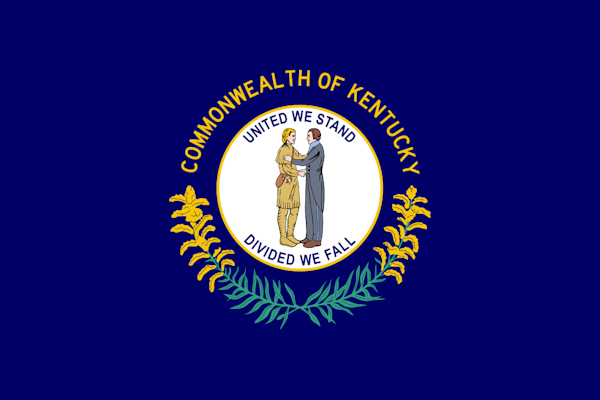
Unveiling Modern Trial Tactics in Transportation Cases through Expert Roundtable
CLM’s Transportation Community experts discuss virtual mediations and assessing the strength of the plaintiff’s attorney.
October 31, 2023
Auto
Education & Training
Insurance Industry
Liability
Litigation
Illinois
Massachusetts
Pennsylvania

Halloween Drunk Driving: A Frightening Reality of Impaired Drivers Amid Celebrations
The only thing scarier than zombies and witches loose on the streets on Halloween is an impaired driver, according to the U.S. Department of Transportation’s National Highway Traffic Safety Administration.
October 30, 2023
Auto
Legislation & Regulation
Liability
Risk Management

Erie Insurance Faces Accusations of Racial Bias in Underwriting Practices
Erie Insurance defends its practice of telling agents to use subjective factors when judging a potential customer. Maryland regulators say the company sought to exclude Black and Hispanic people.
October 30, 2023
Insurance Industry
Legislation & Regulation
Liability
Litigation
Maryland
New York
Pennsylvania

Hurricane Otis Racks Up Billions in Insured Losses, Marks Historic Financial Drain for Mexico’s Insurance Sector
Reinsurance broker Gallagher Re has said that hurricane Otis will be one of the costliest natural catastrophe events in Mexico’s history, with a multi-billion-dollar insurance market loss anticipated.
October 30, 2023
Catastrophe
Insurance Industry
Property
Risk Management

Matthew Perry’s Hot Tub Incident Highlights Insurance Risk Concerns
When it comes to washing away stress and soothing achy joints, it’s hard to beat the warm water and gurgling jets, but the actor’s untimely death serves as a painful reminder of the risks inherent to owning a hot tub.
October 30, 2023
Insurance Industry
Liability
Risk Management

Insurance Claims Spookily Spike as Halloween Nears, Says APCIA
Halloween might be the scariest time of the year in more ways than one. Home and auto insurance claims tend to go up the closer we get to Oct. 31, according to the American Property Casualty Insurance Association.
October 30, 2023
Auto
Liability
Property

Navigating Through the Vines: Assessing the Current State of Winery Insurance Market in California
While certain geographies are experiencing a tightening of P&C capacity, especially in California, wineries in the region are feeling the sting more than most due to extreme weather events.
October 30, 2023
Insurance Industry
Property
California

Amazon Taps Robotics to Tackle Repetitive Motion Injuries
New robot technology could help protect Amazon warehouse workers from repetitive motion injuries, robotics company Agility Robotics said this week.
October 27, 2023
Risk Management
Technology
Workers' Compensation

Virginia School Shooting Sparks Legal Dilemma: Workers’ Compensation or $40 Million Lawsuit for Injured Teacher?
A heated debate has emerged about the once-unimaginable shooting of a teacher by her 6-year-old student: How should the school district take care of the teacher?
October 27, 2023
Education & Training
Legislation & Regulation
Liability
Litigation
Workers' Compensation
Virginia

State Farm Sees a Significant Dip in Catalytic Converter Theft Claims in H1 2023
According to the company’s latest data, there were approximately 14,500 claims related to catalytic converter thefts during this period, marking a significant drop from the 23,570 claims made in the same period last year.
October 27, 2023
Auto
Insurance Industry
Legislation & Regulation
Risk Management

Striking a Digital Balance: Insurers Tackling Claims Complexity in a Digital Age
Americans are turning to digital channels for some home and auto insurance needs, but other areas have proven more complicated.
October 27, 2023
Auto
Insurance Industry
Liability
Property
Technology

What is Super Fog? The Mix of Smoke and Dense Fog Caused a Deadly Pileup in Louisiana
The National Weather Service called it ‘super fog’ — a combination of thick smoke from fires in marshy wetlands of south Louisiana and the fog that often hangs thick in the air on cool, windless mornings.
October 27, 2023
Catastrophe
Liability
Louisiana

Risk Managers Beware: Generative AI Spells Serious Concerns for Security
A recent study by cybersecurity consultancy Gemserv warns that the ever-evolving world of artificial intelligence poses new challenges for companies.
October 26, 2023
Risk Management
Technology

Auto Claims Satisfaction Scores Are Up Despite Longer Repairs
An auto parts shortage combined with longer cycle times for repairs has contributed to repairs taking an average of about 23 days in 2023, up an average of a little more than 6 days from 2022.
October 26, 2023
Auto
Insurance Industry
Technology

Kentucky Approves 18th-straight Decrease in Workers’ Comp Loss Costs
Kentucky’s Insurance Commissioner has approved a 6.4% decrease in average workers’ compensation loss costs for the state, making it the 18th consecutive drop in costs for most Kentucky employers.
October 26, 2023
Legislation & Regulation
Workers' Compensation
Florida
Kentucky





